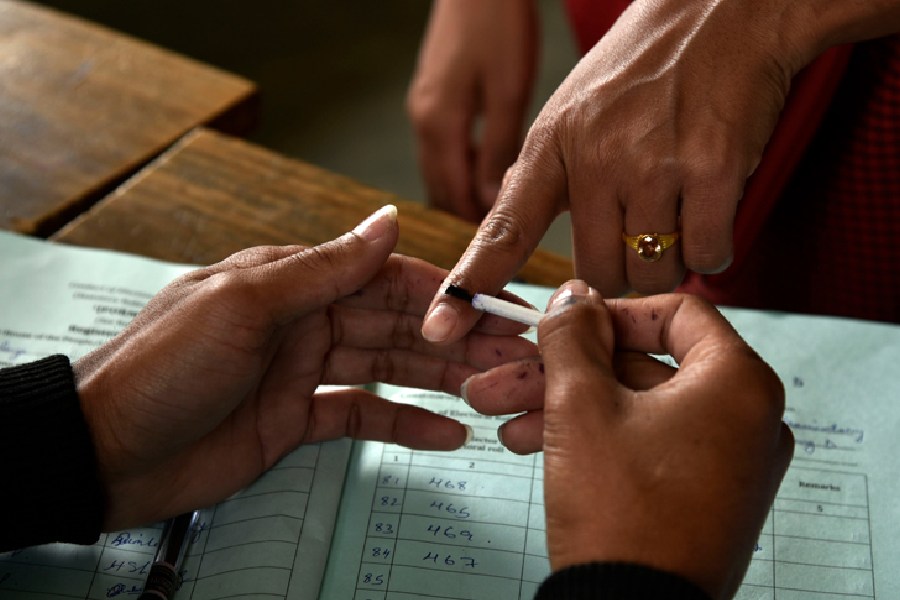 |
| Manipur University students Lumapokpam Zuchingbi practices on her kel-ru-lamkang before going on stage and Milanjit Lias-wang (right) checks his kongyang sarik minutes before playing it at the youth festival in Ranchi. Pictures by Prashant Mitra |
Manipur musicians create sheer magic during their jammin’ sessions with the bamboo.
Using a pair, they lightly tap on a series of panes, keeping the rhythm. Or blow into the natural hollow of one to create melody.
While the last is something flautists the world over do, the Manipuri innovates. And the first is relatively uncommon.
Jharkhand varsity students heard the bamboo with new ears at the 28th East Zone Inter-university Youth Festival, held in Ranchi between December 7 and 11.
Forty Manipur University students brought with them their traditional instruments — kongyang sarik, kongyang khong, kel-ru-lamkang, hangoi and kangsi — all made of bamboo.
Some were bass, some high-pitched. The hangoi — literally a frog in Manipuri — bamboozled listeners by emitting very pleasant sounds when the musician blew through a gap.
Many, like the kongyang sarik and kel-ru-lamkang, were huge.
But because they were made of bamboo, they were lightweight. In fact, only kangsi, a solid-body instrument, has metal panes fitted to a bamboo frame.
Lumapokpam Zuchingbi, a third-year geography student of Manipur University, plays the kel-ru-lamkang with aplomb.
 |
“It gives a bass backdrop, perfectly setting off the higher pitched instruments. I learnt how to play it from my guru Prithvi Raj,” smiled the pretty musician.
Lumapokpam’s instrument looks like a giant, stout flute with a gourd pipe (what they call in Hindi a sapera’s been) sprouting out in the middle.
She plays it like a sax. Only, it looks more intriguing.
To play kongyang sarik and kongyang khong, one needs a pair of small bamboo sticks.
Kongyang sarik is a huge musical instrument of bamboo panes. The instrument needs to sit on the ground — oh yes, it takes up space — and the player runs his sticks on the bamboo panes of different size and thickness fitted on the frame.
“We play it at the start of every traditional song and dance,” said Manipur University student Milanjit Lais-wang, who played the kongyang sarik.
The kel-ru-lamkang, kongyang sarik, kongyang khong, hangoi and kangsi are not the only indigenous instruments Manipur has produced from bamboo.
“Oh, there are over a dozen. We just managed to lug in five here,” the students said in unison.
We are impressed. But what’s in it for Jharkhand?
Well, bamboo grows as prolifically here as it does in Manipur. But we’ve managed to make music out of only the flute.
Kel-ru-lamkang, anyone?
AROUND THE WORLD
Bamboo as a versatile music-maker
Polynesian islands: Jaw harp, rattle
Philippines: Kolintang (percussion with gongs & drums)
Madagascar: Vahila (stringed instrument)
Hawaii & the US: Ukulele (stringed instrument, guitar lookalike)










